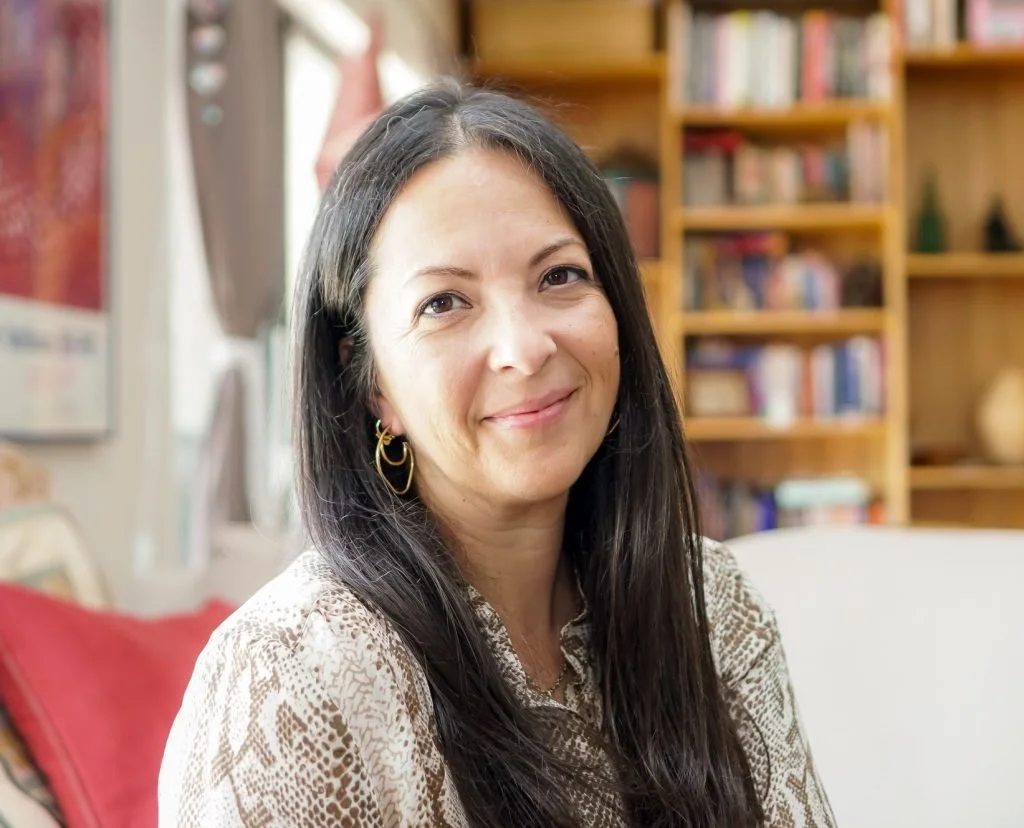Finding Stability in Uncertain Times: How to Build Inner Resilience, Emotional Balance, and Calm
Christina Algeciras
We sat down and chatted with FemCity Member Christina Algeciras. Christina is a Psychotherapist, coach, speaker, yoga teacher & artist. With a world spinning faster each and every day, we asked her for advice and to share her wisdom so we can build inner resilience, emotional balance and more calm in our lives.
1. When life feels uncertain, how can we feel more grounded?
The first step is to acknowledge uncertainty rather than resist it. In Buddhist philosophy, there’s a concept called the “groundless ground”—the idea that life is always shifting, much like the ocean. Some days the waters are calm; others, they’re stormy. Our goal isn’t to control the tides, but to navigate them with presence and steadiness.
From a psychological standpoint, our brains are wired to seek safety and predictability. This instinct once helped our ancestors survive, but today it often manifests as trying to control what’s beyond our reach—creating unnecessary stress.
True stability comes from psychological flexibility—the ability to adapt, soften rigidity, and accept that change is inevitable. When we root ourselves in that truth, we discover a deeper kind of stability—not in external circumstances, but within our own capacity to meet them.
2. What does it mean to build an “inner center”?
An inner center is like your personal north star. Just as ancient navigators used the stars to cross vast oceans, we need inner points of reference—our values. These guide how we live and what truly matters.
Without that inner compass, the demands of life and cultural conditioning can easily sweep us off course. For many women, societal expectations have taught us to measure our worth by how much we care for others. While caregiving is beautiful, it can leave us untethered if it’s our only source of value.
Developing an inner center means peeling back those layers of conditioning and asking: What do I believe? What feels meaningful to me? Who am I beneath the roles I play? When we answer these questions, we create a steady compass that allows us to move through uncertainty with courage, integrity, and authenticity.
3. How does tuning into the nervous system help us handle stress?
Your nervous system is an internal barometer—it constantly signals when you’re safe, threatened, or overwhelmed. Learning to listen to those cues is key.
When you notice your shoulders tensing or your breath shortening, that’s your body speaking. Instead of ignoring those signals, pause and ask: What’s happening right now? What do I need?
Practices from polyvagal theory and somatic psychology show that slowing down—through breath, grounding movement, or gentle touch—can calm the body and restore a sense of safety. The more we develop this awareness, the more choice we have in how we respond, rather than react.
4. What simple practices help women reconnect with themselves during overwhelm?
When life feels heavy, even thirty seconds of mindful presence helps. Take a few deep breaths, place a hand over your heart, and gently remind yourself: This is a lot right now, and it will pass.
Over time, consistency matters more than intensity. One hour a week of therapy, journaling, meditation, or self-reflection can build resilience and steadiness. If formal support isn’t accessible, small rituals—mindful walks, journaling prompts, or creating tech-free moments—reconnect you to your inner world. The key is curiosity and presence: carving out inner space that isn’t constantly consumed by demands.
5. How do depth psychology and somatic work differ from traditional talk therapy?
Traditional talk therapy focuses on conscious thought and problem-solving. Depth psychology goes deeper—it explores the unconscious patterns and narratives shaping our lives. This approach is gradual but powerful, helping us heal from the roots rather than just the surface.
Somatic work complements this by involving the body. Our nervous system often holds stress and memory before the mind can articulate it. Through body-based awareness, clients learn to recognize sensations, tolerate discomfort, and integrate emotions in lasting ways.
Together, depth and somatic work reconnect the mind and body. Rather than rejecting difficult parts of ourselves, we learn to welcome and hold them with compassion—leading to a fuller sense of wholeness.
6. What patterns define true resilience—and how can we strengthen ours?
Many high-achieving women show resilience through constant doing and pushing, shaped by early survival patterns. My work helps clients slow down, widen their perspective, and shift from surviving to thriving.
Resilience is also intergenerational. Research in epigenetics shows that trauma can pass through generations—but so can resilience. We each carry the strength of ancestors who endured and adapted.
We cultivate resilience by balancing strength with rest, expanding our self-compassion, and learning to regulate the nervous system. True resilience isn’t just about endurance—it’s about living with vitality and wholeness.
7. How can we view stress as information rather than something to suppress?
Stress isn’t the enemy—it’s a messenger. The key is discerning between healthy discomfort that fosters growth and harmful stress that depletes us.
Think of three zones:
Comfort Zone: Safe but stagnant.
Growth Zone: Uncomfortable but expansive.
Overwhelm Zone: Too much, leading to burnout.
Many of us normalize living in the overwhelm zone. I’ve done this myself—pushing through exhaustion until my body said “enough.” Once I learned to pause and listen, stress became a compass pointing me toward unmet needs and necessary change.
When we treat stress as valuable data instead of something to silence, we empower ourselves to choose differently.
8. What’s one simple shift to start feeling more centered today?
Start with curiosity. Notice what brings you ease, joy, or relief. Pay attention to your body’s feedback—do you feel light or heavy, open or closed?
This awareness helps you build tolerance for tension instead of escaping it. Growth begins in that space of curiosity. Even small acts—like savoring a joyful moment or breathing through discomfort—create profound transformation over time.
To connect with Christina, please visit her site: www.christinaalgeciras.com
We thank Christina for sponsoring FemCity, our mission and for supporting our communities.

